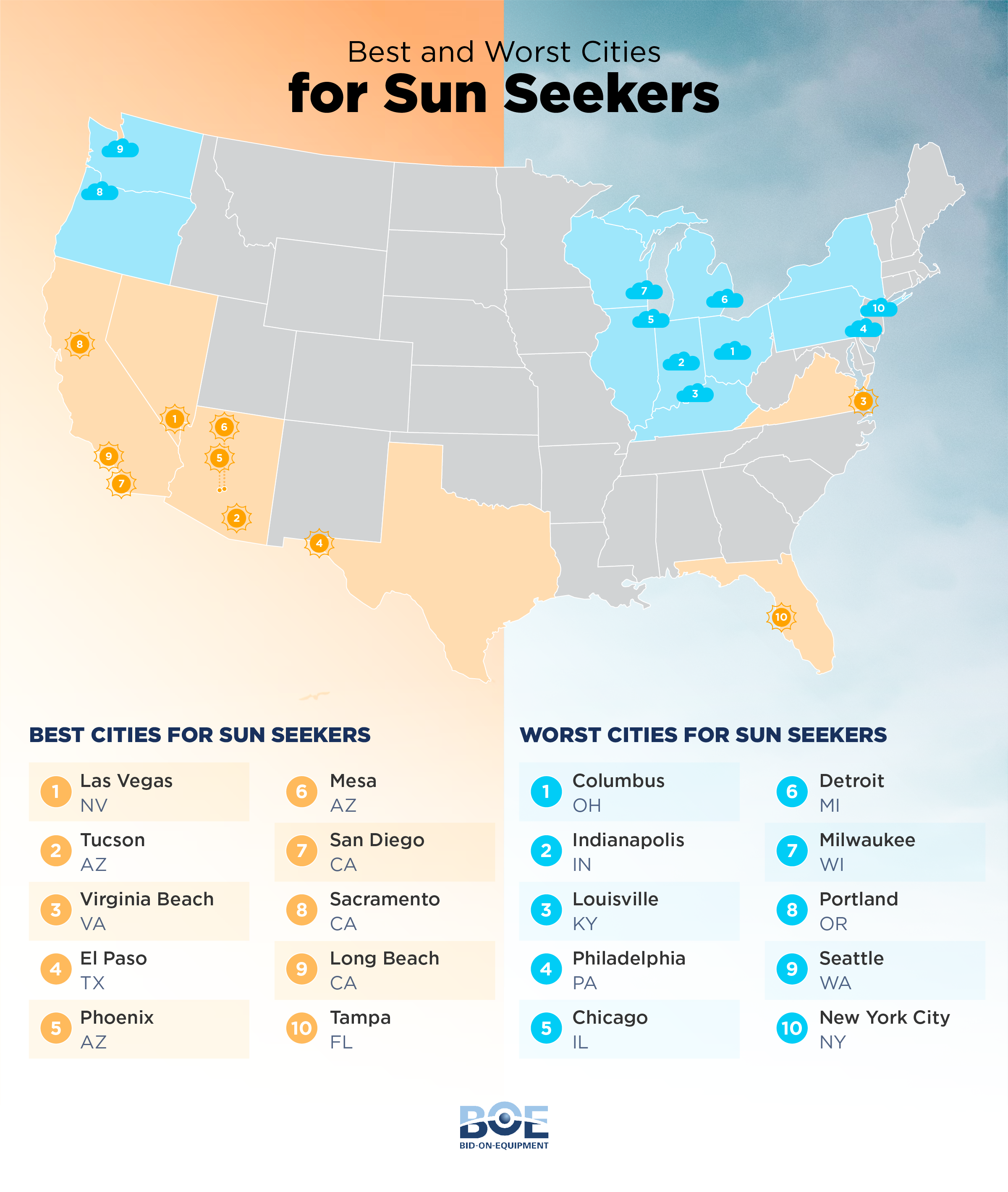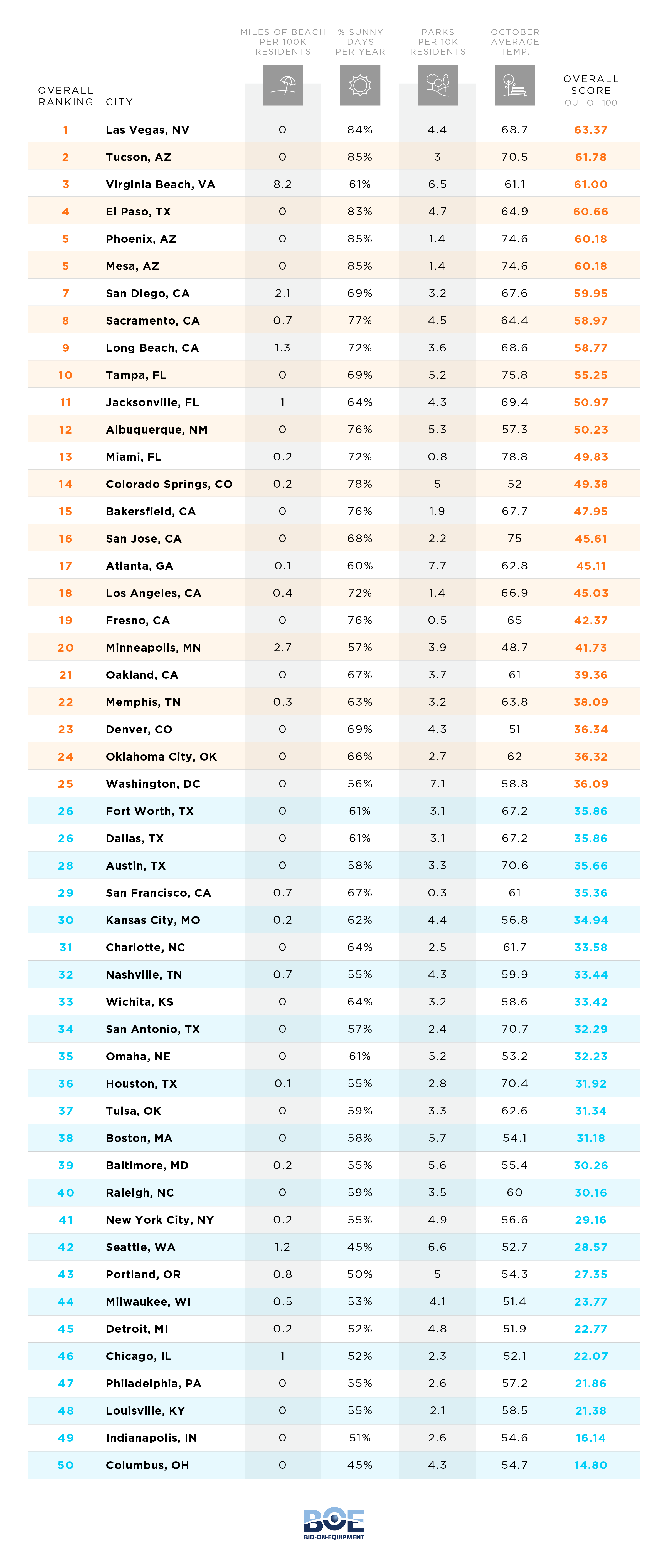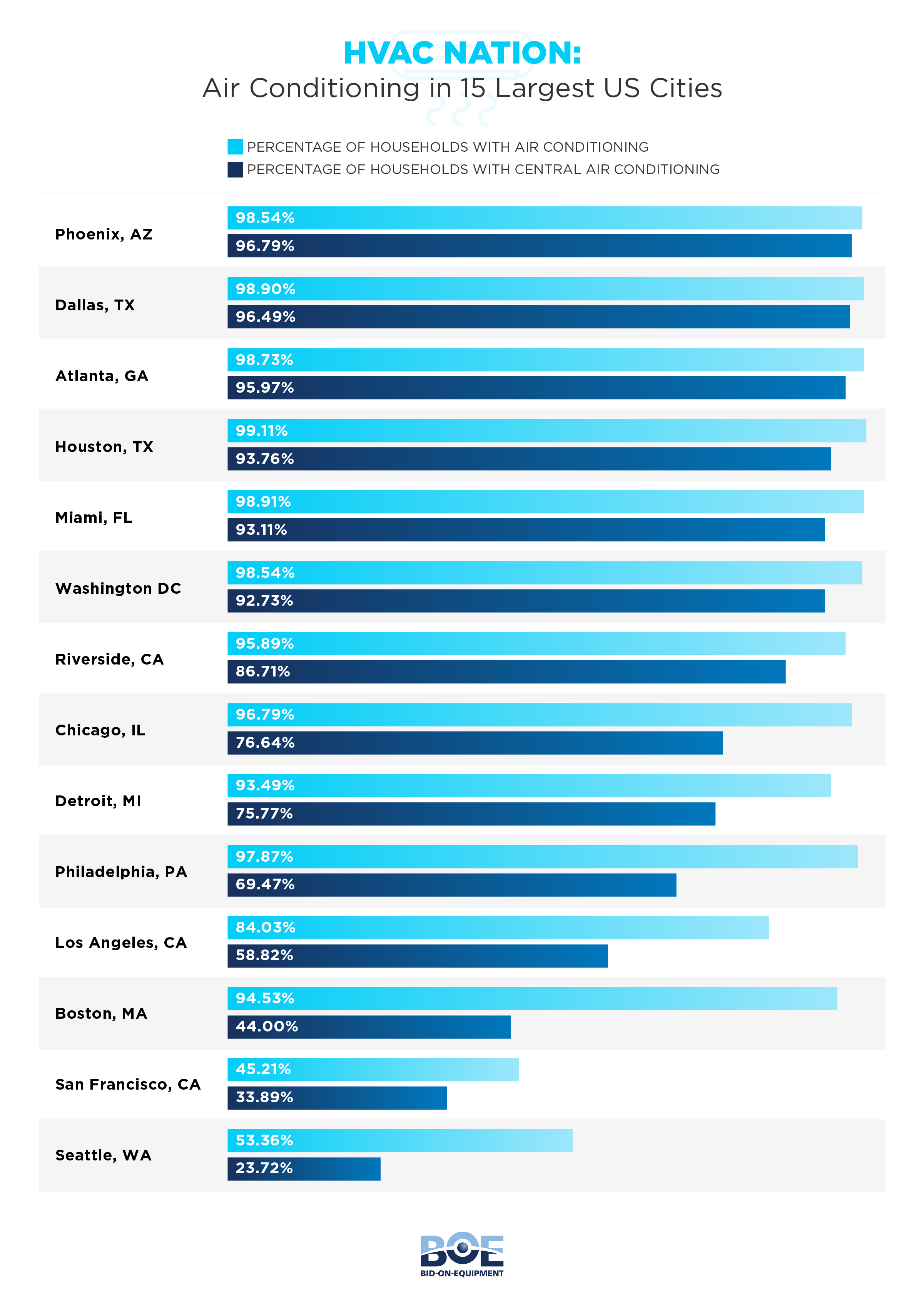Summer is drawing to an end, and Americans nationwide are looking back fondly at barbecues, beach trips, and basking in the sun. While some might relish the advent of cooler weather, others are dreading the return of the cold. But what if summer didn’t have to end quite so soon?
Here at Bid on Equipment, we set out to determine the best cities for those looking to escape the impending cold. We analyzed the 50 biggest cities in the U.S. by population, examining sunny day percentages, access to beach and parkland, and October temperature averages to figure out which cities provide an endless summer– and which to avoid if you’re seeking the sun.
The Best and Worst Cities for an Endless Summer

It probably comes as no surprise that the best cities for people looking to prolong their summer are all located in the southern U.S., with the majority in the Southwest. Las Vegas came out on top as #1 in the nation, with its arid climate and high percentage of sunny days. Arizona also has a great showing with three cities in the top 10. Tucson ranked 2nd followed not far behind by Phoenix (5th) and Mesa (6th).
Some of the other top cities include Virginia Beach, Virginia– home to a very high level of beach mileage per 100,000 people. California is represented strongly in the top 10 as well with San Diego, Sacramento, and Long Beach at 7th, 8th, and 9th.
For those looking to avoid the sun, consider the Midwest: Columbus, Ohio is the worst city for sun seekers in the nation, followed by Indianapolis, Louisville, Philadelphia, and Chicago to cement the five worst cities. Detroit and Milwaukee conclude the major Midwestern metros for the sun-avoidant, while the Pacific Northwest also lives up to its cloudy and rainy stereotypes with Portland and Seattle at 8 and 9 respectively. Finally, the Big Apple, New York City, is the 10th worst city for sun seekers.
Ranking the Best Cities for Sun Seekers

To figure out which cities would keep the sweet days of summer going for longer, we looked at a few key variables:
- Miles of beach per 100,000 residents
- Percentage of sunny days per year
- Number of parks per 10,000 residents
- Average temperature in October
Given that the main priority is the sun, we weighed the percentage of sunny days more than the other variables.
As mentioned before, the South and especially the Southwest of the U.S. are the best place to be if you love the sun, and snowbirds can flock to cities like Las Vegas, Albuquerque, and many cities in California. Minneapolis is the highest-ranked Midwestern city at #20, largely thanks to its parks and beaches.
The Northeast and Midwest are places to avoid for the most part, but this makes sense: no one can claim that these regions boast mild winters. We suggest snowbirds migrate soon, lest the outside feels more like a freezer than a pleasant place to be.
Cities with the Most Central Air Conditioning

All this talk of summer has us heated: which cities in the U.S. will keep us cool, calm, and collected? We also looked at the 15 largest cities (by population) in the U.S. to see which boasted the highest concentration of central air conditioning, and Phoenix comes out on top, with nearly 97% of households reporting central AC.
As a company that sells used HVAC systems and air conditioners, we know how expensive a new appliance like that can be for a business or home. It can be overwhelming to figure out where to start and which used air conditioning systems are the best. But purchasing a used piece of equipment like that can have many benefits, more so than just cooling down your space!
So, whether you’re looking for a place where you can stay inside and blast the AC or a city to soak up the rays outdoors, there are plenty of places to escape the impending winter weather. With this handy guide to prolong your summer, it’s time to pack a bag and travel to cities where summer doesn’t have to end - and the sun will keep on shining.
Methodology & Fair Use
To determine this ranking, we assembled data from the U.S. Census to determine the top 50 U.S. cities by population, sunny day percentages and average October temperatures from the NOAA’s collection of Climate Data, and beach and park data from the Trust for Public Land’s ParkScore dataset. Air conditioning data comes courtesy of the American Housing Survey. Each variable was normalized to a 100 point scale, with the percentage of sunny days per year in each city weighted twice as much as the other variables. We used this to calculate the final score in the ranking and determine the best and worst cities for sun seekers in 2023.
Fair Use:
When using this data and research, please attribute by linking to this study and citing Bid-on-Equipment.com.
